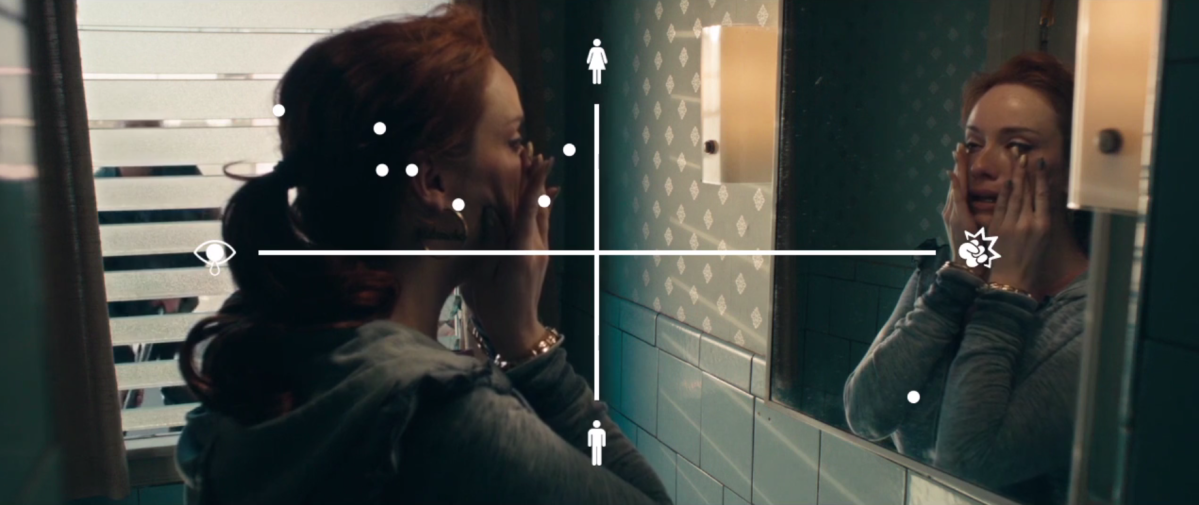Man // Woman // Mirror from Fandor Keyframe on Vimeo.
Movie-goers are familiar with mirrors as a narrative device. They provide moments when a character has to look at themselves, and more often than not, they don’t like what they see. But there’s a bit more to it than that.
Fandor compiled scenes from 46 movies and picked up on a pattern. When a female character looks in the mirror, they usually cry, while male characters have a tendency to become violent, oftentimes smashing the mirror. While there are some notable exceptions (American Psycho), they graphed the trend. There are some obvious explanations for this: constructs of (toxic) masculinity and femininity say that men shouldn’t be emotional, they should be stoic or violently aggressive when confronted with obstacles. Women, in contrast, are more “prone” to being emotional and sensitive.
There’s also something interesting to say about what this pattern says about the way we treat women in art. I’m reminded of a passage from John Berger’s Ways of Seeing that I’m sure a lot of you are familiar with:
You painted a naked woman because you enjoyed looking at her, you put a mirror in her hand and you called the painting Vanity, thus morally condemning the woman whose nakedness you had depicted for your own pleasure.
The real function of the mirror was otherwise. It was to make the woman connive in treating herself as, first and foremost, a sight.
In more than a few of these examples, we see the women forcing themselves to smile, pull their hair back, and put makeup on. It would be easy to say this pattern illustrates how men and women are encouraged to display emotion, and some of them absolutely do that. I also think, however, that many of these scenes, in context, also bring to light what kinds of performances society often demands of women in both art and real life. Most of these men use the mirror as a moment that is completely their own—they let loose frustrations that have been building up, and break the mirror to reject it. Many of these women are using the mirror for a private moment to recompose themselves, to prepare their faces for the outside world, to see themselves “as, first and foremost, a sight.” Of course, it depends on the rest of the film to critique or reinforce that.
I think this is what makes the departures so interesting. When the woman breaks the mirror, it’s almost as if she’s destroying the notion that she’s a “sight” for the world. It goes the other way as well. The extensive use of mirrors in Skyfall, for example, were fascinating to me as James Bond slowly confronts his “image” as the world around him—and he himself—ages.
What did you think about the montage? Any specific mirror scenes stand out to you?
(via Gizmodo)
—The Mary Sue has a strict comment policy that forbids, but is not limited to, personal insults toward anyone, hate speech, and trolling.—
Follow The Mary Sue on Twitter, Facebook, Tumblr, Pinterest, & Google+.







Published: Apr 27, 2016 03:22 pm